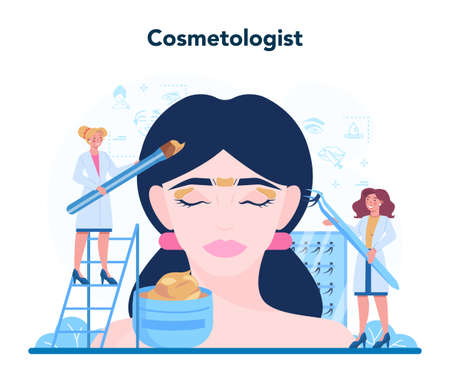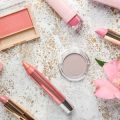Introduction: Why Thinning Hair Needs a Unique Approach
As an Indian man whos battled with thinning hair, I know how frustrating it is to see your scalp peeking through after every shower or comb. Its a common issue among Indian men, and its not just genetics—our hair texture and the harsh climate play a big role. Many of us rush for quick fixes like frequent haircuts or over-the-counter dyes, thinking it’ll add some volume. But here’s the truth: standard cuts and chemical-heavy dyes often make thin hair look even limper and lifeless, especially under the unforgiving Indian sun and humidity. Our unique hair structure—often thick-stranded but sparse, sometimes wavy, sometimes straight—reacts differently to styling than Western hair types. Add in sweat, pollution, and hard water, and you’ve got a recipe for flat, dull hair if you don’t approach it right. That’s why it’s crucial to tailor your haircut and dye combo specifically for Indian conditions. In this article, I’ll break down practical tips and real-life test results on what actually works to make thin hair look fuller, fresher, and more youthful, all while keeping our local lifestyle and culture in mind.
2. Choosing the Right Hair Dye for Indian Hair
If you want to make thin hair look thicker, selecting the right hair dye is crucial—especially for us Indian guys who care about both style and scalp health. Indian hair tends to be darker, and our skin tones range from fair wheatish to deep brown. So, not every international dye suits our look or vibe. Here’s what I found after trying out different brands and shades myself:
Popular Hair Dye Shades for Indian Skin Tones
| Skin Tone | Recommended Shade | Effect |
|---|---|---|
| Fair to Wheatish | Dark Brown, Chocolate Brown | Adds warmth, looks natural, softens features |
| Medium to Dusky | Natural Black, Soft Black, Burgundy Highlights | Makes hair appear fuller, complements undertones |
| Deep Brown | Blue Black, Rich Black with Mahogany Tint | Sharp definition, adds depth and volume illusion |
Top Dye Brands Suitable for Indian Hair (My Tried & Tested List)
- L’Oréal Paris Casting Crème Gloss: Ammonia-free, good coverage, shades like ‘Darkest Brown’ suit most Indian men.
- BBlunt Salon Secret: Designed for Indian hair texture; ‘Natural Black’ is a safe bet if you want a thick look.
- Godrej Expert Rich Crème: Affordable and herbal-based options; try ‘Burgundy’ for a subtle lift.
- Kama Ayurveda Natural Hair Colour: Purely herbal—no chemicals. Good for sensitive scalps but limited shade variety.
Ingredients to Avoid for Scalp Health
- Ammonia: Dries out hair and irritates sensitive Indian scalps.
- P-Phenylenediamine (PPD): Can cause allergic reactions—always do a patch test first!
- Sulfates & Parabens: Strip away natural oils, making thin hair weaker over time.
Pro Tips: Herbal & Ammonia-Free Choices
If you’re serious about thickness and scalp care, go for ammonia-free or herbal-based colours. Brands like Indus Valley and Biotique offer henna-based options that are gentle and add body to your strands. My advice: always check the label for “ammonia-free” or “100% natural ingredients.” Your scalp will thank you later!

3. Haircut Styles That Add Volume
When you’ve got thin hair, the right haircut makes all the difference, especially for us Indian men dealing with our unique hair textures. Over the years, I’ve tested several styles at my go-to barbers in Mumbai and Delhi—so these recommendations aren’t just theory; they’re straight from the chair.
Layered Cuts: The Classic Desi Volume Trick
Layered cuts work wonders on Indian hair, which is often fine but slightly wavy. Ask your barber for subtle layers that start around ear-length. This keeps the top looking fuller and adds body along the sides. During my last visit to Raj’s Saloon in Andheri, I noticed guys with this cut looked instantly thicker-haired, especially when styled with a little hair wax.
Textured Crops: Modern & Easy to Manage
If you prefer low maintenance, a textured crop is a game changer. This style involves keeping the hair short but uneven up top, which creates an illusion of density. My barber in Delhi, Aman bhaiya, uses scissors (not clippers) to add choppy layers – perfect if your hair is thinning at the crown. It’s super popular among young professionals who want to look sharp without fussing every morning.
Proper Fades: Sharp Edges for More Contrast
A well-done fade can actually make thin hair appear thicker by drawing attention to where your hair is densest. I always request a medium skin fade blended into my natural growth pattern. The contrast between the faded sides and slightly longer top gives a crisp outline—my friends say it makes me look instantly younger and more energetic!
Personal Barbershop Experience
From personal experience, combining these cuts with traditional Indian head massages helps stimulate the scalp as well, making each visit a mini self-care ritual. Trust your local barber’s advice—they understand Indian hair better than anyone and have loads of practical tips up their sleeve.
Pro Tip:
Always show reference photos and discuss what works for your face shape and lifestyle before committing to any volume-boosting cut. In India, humidity also plays a big role, so ask about styling products that won’t weigh your hair down or cause stickiness.
4. Salon Vs. DIY: Where Should You Get It Done?
If you are planning to try the best hair dye and cutting combo for thin hair to look thicker, one big decision is whether to visit a professional salon or attempt it at home. In India, this choice depends on your location, budget, and the kind of result you want. Let’s break down the pros and cons of both options, keeping in mind the real experiences from metro cities like Mumbai, Bangalore, and Delhi, as well as smaller towns and semi-urban areas.
Professional Salon: The Pros & Cons
| Advantages | Disadvantages |
|---|---|
|
|
DIY at Home: The Pros & Cons
| Advantages | Disadvantages |
|---|---|
|
|
Cost Comparison: Metro vs Small Towns
| Service Type | Mumbai/Delhi/Bangalore | Tier 2/Small Towns |
|---|---|---|
| Salon Dye + Cut | ₹2,500 – ₹5,000+ | ₹800 – ₹1,800 |
| DIY (Products Only) | ₹400 – ₹900 | |
Final Thoughts
If you live in a metro city and want long-lasting, professional results—especially for making thin hair look fuller—investing in a reputed salon is worth it. For students or those in smaller towns where salons may not be up-to-date with latest trends, DIY is pocket-friendly but comes with risks. Whichever route you choose, always prioritise quality products and study some basic Indian haircut tutorials online before trying anything radical at home!
5. Hair Care Tips Post Dye & Cut
After getting the best hair dye and cut combo for thin hair, your job isn’t done yet, dost. Maintaining healthy, thicker-looking hair post-salon is all about the right aftercare. Here’s my hands-on guide based on what works in India, using easily available products and some desi nuskhe (traditional remedies) that our grandmothers swear by.
Choose a Gentle, Sulphate-Free Shampoo
Thin and coloured hair needs TLC, so always pick a mild, sulphate-free shampoo. Brands like Himalaya, Biotique, or Khadi Natural have shampoos specifically made for coloured and fragile hair. These don’t strip away natural oils or the colour you just paid good money for. Wash your hair 2-3 times a week; over-washing is a big no-no for thin Indian hair.
Conditioning: Go Light but Don’t Skip
Use a lightweight conditioner like Dove Oxygen Moisture or L’Oréal Paris Extraordinary Clay. Apply only to the ends and mid-lengths—never on the scalp—to prevent limpness. For extra softness, try homemade curd (dahi) masks once a week; it deeply nourishes without weighing hair down.
Coconut Oil: The OG Indian Remedy
No matter what fancy serums you see online, nothing beats coconut oil for Indian hair types. Warm up some pure coconut oil (Parachute or Dabur Vatika are easy to find), massage gently into the scalp at night, and wash off next morning. This keeps dyed strands hydrated and strengthens roots—important for us with thin hair.
Argan Oil for Extra Shine
If your budget allows, argan oil (look for St. Botanica or Moroccanoil) is brilliant post-dye. Just 2-3 drops on towel-dried hair adds shine and controls frizz, making your new colour pop.
Avoid Heat Styling & Sun Exposure
After dyeing, thin hair becomes extra sensitive to heat. Limit blow-drying; if you must use heat tools, always apply a heat protectant spray (BBlunt and Livon have decent options). Also, cover your head with a scarf or cap when out in harsh sun to prevent colour fading.
Desi Herbal Rinses
Try rinsing your hair with green tea or black tea once a week—it’s an old-school Indian hack that adds volume and makes your colour last longer. Another tip: mix amla powder with water for a rinse; it cools the scalp and makes hair look fuller instantly.
Final Pro Tip: Regular Trims
Don’t forget to schedule trims every 6-8 weeks at your local salon—this keeps split ends in check and maintains that fresh “thicker” look you want from your combo cut and dye session!
6. Styling Hacks to Make Thinner Hair Look Fuller
When you are dealing with thin hair, especially under the hot and humid Indian climate, regular styling tricks from the West just dont cut it. I’ve spent months testing different hacks on my own hair and here’s what actually works when you want that full-headed Bollywood hero look without fuss.
Hair Fibers: Instant Volume Booster
Desi gents, if you havent tried hair fibers yet, youre missing out. These tiny fibers cling to your hair strands, making them appear much thicker in seconds. My go-to is a dark brown fiber that matches most Indian hair shades. For best results, sprinkle the fibers lightly on thinning areas after drying and styling your hair. The real test was during a family function in Chennai’s heat—no embarrassing streaks or dripping, just solid coverage till I washed it off at night.
Matte Wax: Texture Without Grease
Forget oily gels—matte wax is your friend in Indian weather. It gives texture and hold without weighing down fine strands or making your scalp look greasy (which can be a disaster in our climate). I use a pea-sized amount, work it between my palms, and scrunch it into the roots and mid-lengths. This trick instantly adds body and makes my haircut look sharper and fuller. Plus, it survives an auto ride through Mumbai traffic.
Blow-Drying Tricks: The Desi Way
Blow-drying can transform limp hair—but technique matters. After towel-drying (never rub harshly), flip your head upside down and blast with cold air for 30 seconds. This lifts the roots and locks in volume. Then, with a round brush, pull sections upward while drying on medium heat for more lift. Don’t forget a quick blast of cool air at the end to set everything—important because humidity here can undo all your hard work otherwise.
Personal Notes from Real-World Testing
I road-tested these hacks during peak summer wedding season and on daily metro commutes in Delhi. Even with sweat and constant helmet-wearing, my hairstyle didn’t flop by lunch. If you combine these techniques with the right dye and cut combo (like subtle highlights + feathered layers), you’ll notice people looking twice at your mane—trust me, my friends started asking if I got a transplant!
Pro Tip
Carry a small comb and travel-size matte wax in your backpack or office drawer for quick touch-ups before meetings or after chai breaks. In our unpredictable weather, it pays to be prepared!
7. Final Personal Notes: My Go-to Combo for Looking Thicker
If you’re like me—an Indian guy who’s struggled with thin hair since his mid-20s—you know it’s not just about finding the right products, but also about discovering a look that fits our local style and day-to-day life. After plenty of trial and error, I’ve landed on a combo that consistently helps my hair look thicker and healthier, while still feeling natural and easy to maintain in our Indian climate.
Haircut: My go-to is a classic textured crop with short sides (not shaved, just faded) and more volume left on top. This cut works wonders for thin Indian hair because the texture breaks up any see-through areas and the extra length on top can be styled forward or slightly messy—perfect for hiding thinning spots at the crown or temples. I always ask my barber for subtle layering, nothing too choppy, so it blends well and doesn’t look artificial. Keeping the sides neat also makes the top look fuller by contrast.
Hair Dye: When it comes to dye, I swear by using a shade close to my natural black-brown, just one or two tones darker. In India, L’Oréal Paris Casting Crème Gloss in Darkest Brown has been my best bet—it gives coverage without making my hair look unnaturally black or flat. What really made a difference was asking the salon guy to add some soft lowlights—just half a shade darker than my base color—especially at the roots and around the temples. These subtle variations create depth, making thin hair appear denser under both sunlight and indoor lighting (trust me, this matters when you’re out for chai with friends or at a family function).
Styling Routine: I use a lightweight matte hair wax (like Set Wet Matte) instead of gel or heavy creams; this keeps my hair from getting greasy in the heat and humidity. A quick blow-dry with my head upside down adds lift at the roots—something I picked up from YouTube tutorials by Indian stylists. If you’re worried about damage from frequent dyeing or heat styling, try adding a dab of coconut oil twice a week as a pre-shampoo treatment (a classic Indian dad hack that still works!).
In Summary: For me, the winning formula is: textured crop + faded sides + natural-looking dark brown dye with soft lowlights + matte wax styling. It’s simple to maintain even if you’re running late for work or heading to a last-minute wedding invitation. Most importantly, it looks sharp yet subtle enough for any setting—from an office meeting in Mumbai to a casual night out in Bangalore.
This approach has given me real confidence about my hair again. If your hair type and lifestyle are similar to mine, give this combo a shot—you’ll be surprised how much thicker your mane can look without going overboard!


